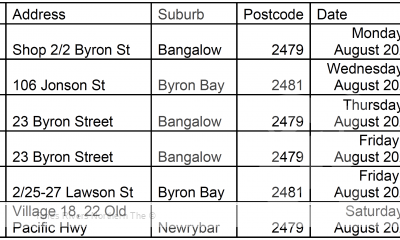Top Romantic Getaways to Explore with Your Partner
Planning a holiday with your partner can be an exciting endeavour, especially when it involves discovering new places together. From charming beach retreats to cosy mountain hideaways, the world is full of romantic destinations. Here are some of the most enchanting top romantic getaways to consider for your next couple’s escape with your partner.
Santorini, Greece
With its whitewashed buildings, stunning sunsets, and crystal-clear waters, Santorini is the epitome of romance. This island in the Aegean Sea offers breath taking views from cliff-top villages like Oia and Fira. Couples can enjoy a sunset cruise, indulge in gourmet dining with a view, or simply relax on the volcanic beaches. The unique blend of natural beauty and luxurious accommodations makes Santorini a top choice for a romantic getaway.
Advertisements

Kyoto, Japan
Kyoto, once the capital of Japan, is a city of serene beauty, making it perfect for couples who appreciate culture and tranquillity. The city is renowned for its classical Buddhist temples, as well as gardens, imperial palaces, and traditional wooden houses. Strolling through the Arashiyama Bamboo Grove or enjoying the cherry blossoms in Maruyama Park can be magical experiences. For an unforgettable evening, dine at a riverside restaurant in Pontocho, where you can savour traditional Kyoto cuisine.
Paris, France
No list of romantic destinations would be complete without mentioning Paris. Known as the “City of Love,” Paris is ideal for couples looking to immerse themselves in a city rich with history, art, and romance. From the iconic Eiffel Tower to the charming cafes of Montmartre, there is no shortage of romantic spots. Couples can enjoy a leisurely boat ride on the Seine, visit the Louvre, or simply enjoy a croissant at a sidewalk cafe.
Venice, Italy
Venice is a fairy-tale city built on water, offering a unique romantic experience. The best way to explore is by getting lost in its labyrinth of alleys and canals. A gondola ride through these waterways, under the stone-arched bridges, makes for an iconic romantic activity. Be sure to visit Piazza San Marco, enjoy a coffee at the historic Caffè Florian, and admire the stunning views from the top of the Campanile.
Banff, Canada
For couples who love the great outdoors, Banff National Park in Alberta is a perfect destination. The park offers some of the world’s most breath taking wilderness scenery. Couples can explore its numerous lakes, such as the famous Lake Louise, and enjoy activities like hiking, skiing, or relaxing in natural hot springs. Staying in a cosy cabin or a luxurious resort, Banff provides a wonderful mix of adventure and relaxation.
Maldives
The Maldives is synonymous with luxury romantic travel. This tropical paradise offers stunning overwater bungalows, pristine beaches, and crystal-clear waters. Couples can snorkel or dive among vibrant coral reefs, enjoy spa treatments, or simply relax on the private deck of their villa. The Maldives is ideal for those looking to escape to a secluded, intimate environment.
Cape Town, South Africa
Cape Town is a vibrant city that offers a mix of cultures, cuisines, and landscapes, making it an exciting destination for couples. You can visit the picturesque Cape Winelands, enjoy a cable car ride to the top of Table Mountain, or explore the historic Robben Island. The city’s stunning beaches and vibrant nightlife also provide plenty of opportunities for romantic outings.
Florence, Italy
Florence, the birthplace of the Renaissance, is a city that oozes romance through its art, architecture, and ambiance. Couples can explore the Uffizi Gallery to see some of the world’s most famous artworks, stroll through the Boboli Gardens, or climb to the top of the Duomo for spectacular city views. The charming streets of Florence are perfect for evening walks followed by a dinner featuring Tuscan cuisine.
Queenstown, New Zealand
Queenstown is a dream destination for adventurous couples. Set against the dramatic backdrop of the Southern Alps, it’s known for its adventure sports and stunning scenery. Couples can enjoy bungee jumping, jet boating, or skiing, depending on the season. For a more relaxed experience, take a scenic cruise on Lake Wakatipu or sample some of the excellent local wines.
Bruges, Belgium
Bruges, with its medieval architecture and picturesque canals, feels like a scene from a romantic movie. Couples can explore the city on a canal boat tour, sample Belgian chocolates and waffles, or simply wander through cobbled streets and market squares. The peaceful atmosphere of Bruges makes it a perfect getaway for couples seeking a slower-paced vacation.
Conclusion
Choosing the right destination can turn a simple holiday into an unforgettable romantic journey. Whether you’re seeking adventure, relaxation, culture, or just a change of scenery, these destinations offer a wealth of experiences that can cater to any couple’s interests. Remember, the most important part is enjoying the time spent with each other, discovering new places, and making memories that will last a lifetime.
For more travel news, click here.





 Tweed Shire News2 years ago
Tweed Shire News2 years ago
 Motoring News1 year ago
Motoring News1 year ago
 COVID-19 Northern Rivers News3 years ago
COVID-19 Northern Rivers News3 years ago
 COVID-19 Northern Rivers News3 years ago
COVID-19 Northern Rivers News3 years ago
 Northern Rivers Local News3 years ago
Northern Rivers Local News3 years ago
 Health News3 years ago
Health News3 years ago
 COVID-19 Northern Rivers News3 years ago
COVID-19 Northern Rivers News3 years ago
 NSW Breaking News3 years ago
NSW Breaking News3 years ago






























